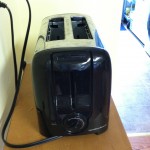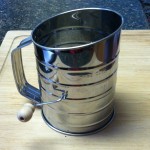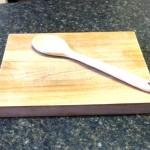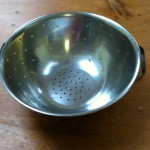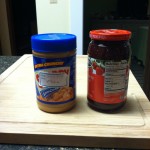People with celiac disease or gluten sensitivity must follow a gluten free regime for life. For celiacs, even tiny amounts of ingested gluten can continue to damage the lining of the small intestine. Totally avoiding gluten goes way beyond just choosing gluten free foods to eat. Accidental exposure to gluten can happen in a number of ways, and when it does, the person becomes sick. If you have celiac disease or gluten sensitivity, you need to be extra vigilant about avoiding all sources of gluten. Unfortunately, gluten may be lurking in places that one would never imagine.
Here’s my list of hidden gluten sources which can cross contaminate safe and otherwise gluten free food :
1. The toaster: If your toaster was previously used for toasting wheat products, this is a source of gluten contamination. It is impossible to clean out the inside of a toaster adequately. Purchase your own separate toaster and use it only for the purpose of toasting gluten free breads or muffins. Alternatively, if you have a toaster oven with a removable tray that can be thoroughly cleaned, you may use that to toast the gluten free items.
2. Flour sifters: The mesh screen found in flour sifters or mesh strainers are difficult to clean, so if yours has been used for all purpose, or any other type of wheat, barley or rye flour, get a new sifter.
3. Wooden cutting boards, spoons, spatulas: Wood is porous and if used with wheat products previously, small particles of gluten remain in the wood, despite cleaning. Have a cutting board designated for only gluten free foods. If you like using wooden spoons, etc. buy new ones for all future food preparation.
4. Colanders are often used to drain pasta, and if you used regular pasta made from wheat in the past, it’s time to get a new stainless colalnder. The small holes in colanders are difficult to clean and render completely free of gluten.
5. Jars of food: Peanut butter, jam, or mayonnaise are just a few examples of foods that are spread on bread. Knives that come in contact with bread, then go back into a jar will contaminate the food in the jar. If there are other people in your household that use breads or crackers made from wheat, be sure to purchase your own separate jars of food. Put a label on each jar “gluten free ” or your name. Instruct other family members not to use your separate items.
If you have been maintaining the gluten free diet for a while, yet still experience symptoms or get sick from certain foods, dig a little deeper, to see whether you might be exposed to gluten from another source. While you are at it, don’t forget to check your medicine cabinet, and vitamin supplements! Sometimes pills have coatings or additives that are sources of gluten as well.

